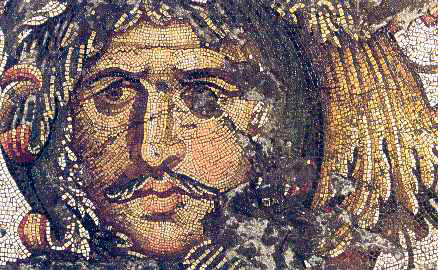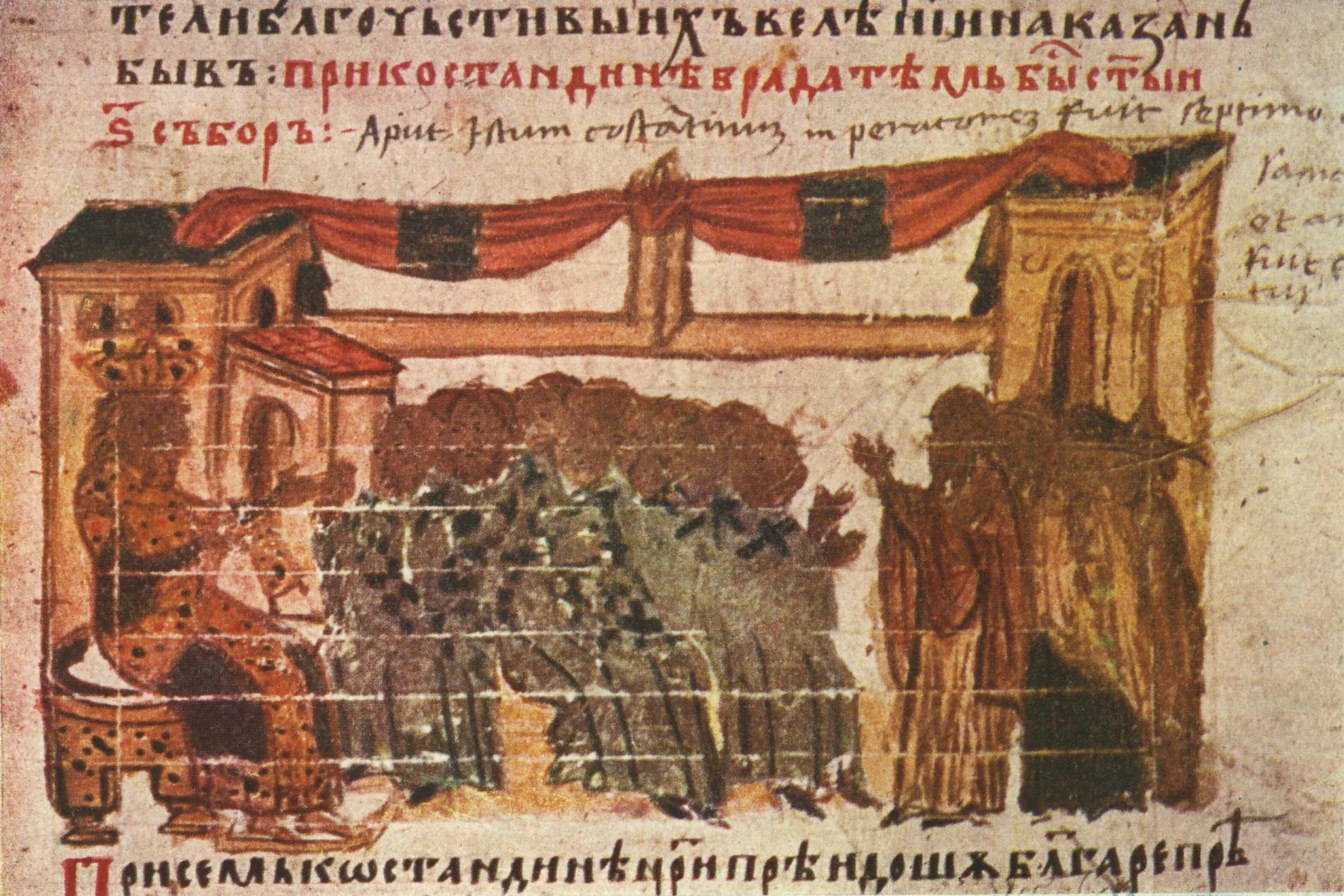|
Great Palace
The Great Palace of Constantinople ( el, Μέγα Παλάτιον, ''Méga Palátion''; Latin: ''Palatium Magnum''), also known as the Sacred Palace ( el, Ἱερὸν Παλάτιον, ''Hieròn Palátion''; Latin: ''Sacrum Palatium''), was the large imperial Byzantine palace complex located in the south-eastern end of the peninsula now known as Old Istanbul (formerly Constantinople), in modern Turkey. It served as the main imperial residence of the Eastern Roman or Byzantine emperors until 1081 and was the centre of imperial administration for over 690 years. Only a few remnants and fragments of its foundations have survived into the present day. History When Constantine I refounded Byzantium as Constantinople in 330, he planned out a palace for himself. The palace was located between the Hippodrome and Hagia Sophia. The complex of palaces was rebuilt and expanded several times during its history. Much of the complex was destroyed during the Nika riots of 532 and was rebuil ... [...More Info...] [...Related Items...] OR: [Wikipedia] [Google] [Baidu] |
Constantine VII
Constantine VII Porphyrogenitus (; 17 May 905 – 9 November 959) was the fourth Emperor of the Macedonian dynasty of the Byzantine Empire, reigning from 6 June 913 to 9 November 959. He was the son of Emperor Leo VI and his fourth wife, Zoe Karbonopsina, and the nephew of his predecessor Alexander. Most of his reign was dominated by co-regents: from 913 until 919 he was under the regency of his mother, while from 920 until 945 he shared the throne with Romanos Lekapenos, whose daughter Helena he married, and his sons. Constantine VII is best known for the ''Geoponika'' (τά γεοπονικά), an important agronomic treatise compiled during his reign, and three, perhaps four, books; ''De Administrando Imperio'' (bearing in Greek the heading Πρὸς τὸν ἴδιον υἱὸν Ῥωμανόν), '' De Ceremoniis'' (Περὶ τῆς Βασιλείου Τάξεως), '' De Thematibus'' (Περὶ θεμάτων Άνατολῆς καὶ Δύσεως), and ''Vita Basilii'' ( ... [...More Info...] [...Related Items...] OR: [Wikipedia] [Google] [Baidu] |
Saadi Shirazi
Saadi Shīrāzī ( fa, ابومحمّد مصلحالدین بن عبدالله شیرازی), better known by his pen name Saadi (; fa, سعدی, , ), also known as Sadi of Shiraz (, ''Saʿdī Shīrāzī''; born 1210; died 1291 or 1292), was a Persian poet and prose writer of the medieval period. He is recognized for the quality of his writings and for the depth of his social and moral thoughts. Saadi is widely recognized as one of the greatest poets of the classical literary tradition, earning him the nickname "The Master of Speech" or "The Wordsmith" ( ''ostâd-e soxan'') or simply "Master" ( ''ostâd'') among Persian scholars. He has been quoted in the Western traditions as well. '' Bustan'' has been ranked as one of the 100 greatest books of all time by ''The Guardian''. Biography Saadi was born in Shiraz, Iran, according to some, shortly after 1200, according to others sometime between 1213 and 1219. In the Golestan, composed in 1258, he says in lines evidently addr ... [...More Info...] [...Related Items...] OR: [Wikipedia] [Google] [Baidu] |
Persian People
The Persians are an Iranian ethnic group who comprise over half of the population of Iran. They share a common cultural system and are native speakers of the Persian language as well as of the languages that are closely related to Persian. The ancient Persians were originally an ancient Iranian people who had migrated to the region of Persis (corresponding to the modern-day Iranian province of Fars) by the 9th century BCE. Together with their compatriot allies, they established and ruled some of the world's most powerful empires that are well-recognized for their massive cultural, political, and social influence, which covered much of the territory and population of the ancient world.. Throughout history, the Persian people have contributed greatly to art and science. Persian literature is one of the world's most prominent literary traditions. In contemporary terminology, people from Afghanistan, Tajikistan, and Uzbekistan who natively speak the Persian language are know ... [...More Info...] [...Related Items...] OR: [Wikipedia] [Google] [Baidu] |
Mehmed II
Mehmed II ( ota, محمد ثانى, translit=Meḥmed-i s̱ānī; tr, II. Mehmed, ; 30 March 14323 May 1481), commonly known as Mehmed the Conqueror ( ota, ابو الفتح, Ebū'l-fetḥ, lit=the Father of Conquest, links=no; tr, Fâtih Sultan Mehmed, links=no), was an Ottoman sultan who ruled from August 1444 to September 1446, and then later from February 1451 to May 1481. In Mehmed II's first reign, he defeated the crusade led by John Hunyadi after the Hungarian incursions into his country broke the conditions of the truce Peace of Szeged. When Mehmed II ascended the throne again in 1451, he strengthened the Ottoman navy and made preparations to attack Constantinople. At the age of 21, he Fall of Constantinople, conquered Constantinople (modern-day Istanbul) and brought an end to the Byzantine Empire. After the conquest Mehmed claimed the title Caesar (title), Caesar of the Roman Empire ( ota, قیصر روم, Qayser-i Rûm, links=no), based on the fact that Constanti ... [...More Info...] [...Related Items...] OR: [Wikipedia] [Google] [Baidu] |
Palaiologos
The House of Palaiologos ( Palaiologoi; grc-gre, Παλαιολόγος, pl. , female version Palaiologina; grc-gre, Παλαιολογίνα), also found in English-language literature as Palaeologus or Palaeologue, was a Byzantine Greek family that rose to nobility and produced the last and longest-ruling dynasty in the history of the Byzantine Empire. Their rule as Emperors and Autocrats of the Romans lasted almost two hundred years, from 1259 to the Fall of Constantinople in 1453. The origins of the family are unclear. Their own medieval origin stories ascribed them an ancient and prestigious origin in ancient Roman Italy, descended from some of the Romans that had accompanied Constantine the Great to Constantinople upon its foundation in 330. It is more likely that they originated significantly later in Anatolia since the earliest known member of the family, possibly its founder, Nikephoros Palaiologos, served as a commander there in the second half of the 11th centur ... [...More Info...] [...Related Items...] OR: [Wikipedia] [Google] [Baidu] |
Michael VIII Palaiologos
Michael VIII Palaiologos or Palaeologus ( el, Μιχαὴλ Δούκας Ἄγγελος Κομνηνὸς Παλαιολόγος, Mikhaēl Doukas Angelos Komnēnos Palaiologos; 1224 – 11 December 1282) reigned as the co-emperor of the Empire of Nicaea from 1259 to 1261, and as Byzantine emperor from 1261 until his death in 1282. Michael VIII was the founder of the Palaiologan dynasty that would rule the Byzantine Empire until the Fall of Constantinople in 1453. He recovered Constantinople from the Latin Empire in 1261 and transformed the Empire of Nicaea into a restored Byzantine Empire. His reign saw considerable recovery of Byzantine power, including the enlargement of the Byzantine army and navy. It would also include the reconstruction of the city of Constantinople, and the increase of its population. Additionally, he re-established the University of Constantinople, which led to what is regarded as the Palaiologan Renaissance between the 13th and 15th centuries. It was ... [...More Info...] [...Related Items...] OR: [Wikipedia] [Google] [Baidu] |
Quinisext Council
The Quinisext Council (Latin: ''Concilium Quinisextum''; Koine Greek: , ''Penthékti Sýnodos''), i.e. the Fifth-Sixth Council, often called the Council ''in Trullo'', Trullan Council, or the Penthekte Synod, was a church council held in 692 at Constantinople under Justinian II. It is known as the "Council in Trullo" because, like the Sixth Ecumenical Council, it was held in a domed hall in the Imperial Palace (τρούλος 'troulos''meaning a cup or dome). Both the Fifth and the Sixth Ecumenical Councils had omitted to draw up disciplinary canons, and as this council was intended to complete both in this respect, it took the name of Quinisext. It was attended by 215 bishops, mostly from the Eastern Roman Empire. Basil of Gortyna in Crete belonged to the Roman patriarchate and called himself papal legate, though no evidence is extant of his right to use that title. Decisions Many of the council's canons were reiterations. It endorsed not only the six ecumenical councils alr ... [...More Info...] [...Related Items...] OR: [Wikipedia] [Google] [Baidu] |
Ecumenical Council
An ecumenical council, also called general council, is a meeting of bishops and other church authorities to consider and rule on questions of Christian doctrine, administration, discipline, and other matters in which those entitled to vote are convoked from the whole world (oikoumene) and which secures the approbation of the whole Church. The word " ecumenical" derives from the Late Latin ''oecumenicus'' "general, universal", from Greek ''oikoumenikos'' "from the whole world", from ''he oikoumene ge'' "the inhabited world" (as known to the ancient Greeks); the Greeks and their neighbors, considered as developed human society (as opposed to barbarian lands); in later use "the Roman world" and in the Christian sense in ecclesiastical Greek, from ''oikoumenos'', present passive participle of ''oikein'' ("inhabit"), from ''oikos'' ("house, habitation"). The first seven ecumenical councils, recognised by both the eastern and western denominations comprising Chalcedonian Christianit ... [...More Info...] [...Related Items...] OR: [Wikipedia] [Google] [Baidu] |
Third Council Of Constantinople
The Third Council of Constantinople, counted as the Sixth Ecumenical Council by the Eastern Orthodox and Catholic Churches, as well by certain other Western Churches, met in 680–681 and condemned monoenergism and monothelitism as heretical and defined Jesus Christ as having two energies and two wills (divine and human).George Ostrogorsky, ''History of the Byzantine State'' (Rutgers University Press, 1995), 127. Background The council settled a set of theological controversies that went back to the sixth century but had intensified under the emperors Heraclius () and Constans II (). Heraclius had set out to recover much of the part of his empire lost to the Persians and had attempted to bridge the controversy with monophysitism, which was particularly strong in Syria and Egypt, by proposing a moderate theological position that had as good support in the tradition as any other. The result was first monoenergism, i.e. that Christ, though existing in two natures (divine and h ... [...More Info...] [...Related Items...] OR: [Wikipedia] [Google] [Baidu] |
Baldwin II Of Constantinople
Baldwin II, also known as Baldwin of Courtenay (french: Baudouin de Courtenay; late 1217 – October 1273), was the last Latin Emperor ruling from Constantinople. Biography Baldwin II was born in Constantinople (the only Latin emperor to be born there), a younger son of Yolanda of Flanders, sister of the first two emperors, Baldwin I and Henry of Flanders. Her husband, Peter of Courtenay, was third emperor of the Latin Empire, and had been followed by his son Robert of Courtenay, on whose death in 1228 the succession passed to Baldwin, then an 11-year-old boy. The barons chose John of Brienne as emperor-regent for life. Baldwin was also to marry Marie of Brienne, daughter of John and his third wife Berenguela of Leon, and on John's death to enjoy the full imperial sovereignty. The marriage contract was carried out in 1234. Since the death of Baldwin's uncle Emperor Henry in 1216, the Latin Empire had declined and the Byzantine (Nicene) power advanced; and the hopes that John ... [...More Info...] [...Related Items...] OR: [Wikipedia] [Google] [Baidu] |
Latin Empire
The Latin Empire, also referred to as the Latin Empire of Constantinople, was a feudal Crusader state founded by the leaders of the Fourth Crusade on lands captured from the Byzantine Empire. The Latin Empire was intended to replace the Byzantine Empire as the Western-recognized Roman Empire in the east, with a Catholic emperor enthroned in place of the Eastern Orthodox Roman emperors. The Fourth Crusade had originally been called to retake the Muslim-controlled city of Jerusalem but a sequence of economic and political events culminated in the Crusader army sacking the city of Constantinople, the capital of the Byzantine Empire. Originally, the plan had been to restore the deposed Byzantine Emperor Isaac II Angelos, who had been usurped by Alexios III Angelos, to the throne. The crusaders had been promised financial and military aid by Isaac's son Alexios IV, with which they had planned to continue to Jerusalem. When the crusaders reached Constantinople the situation quickly ... [...More Info...] [...Related Items...] OR: [Wikipedia] [Google] [Baidu] |






